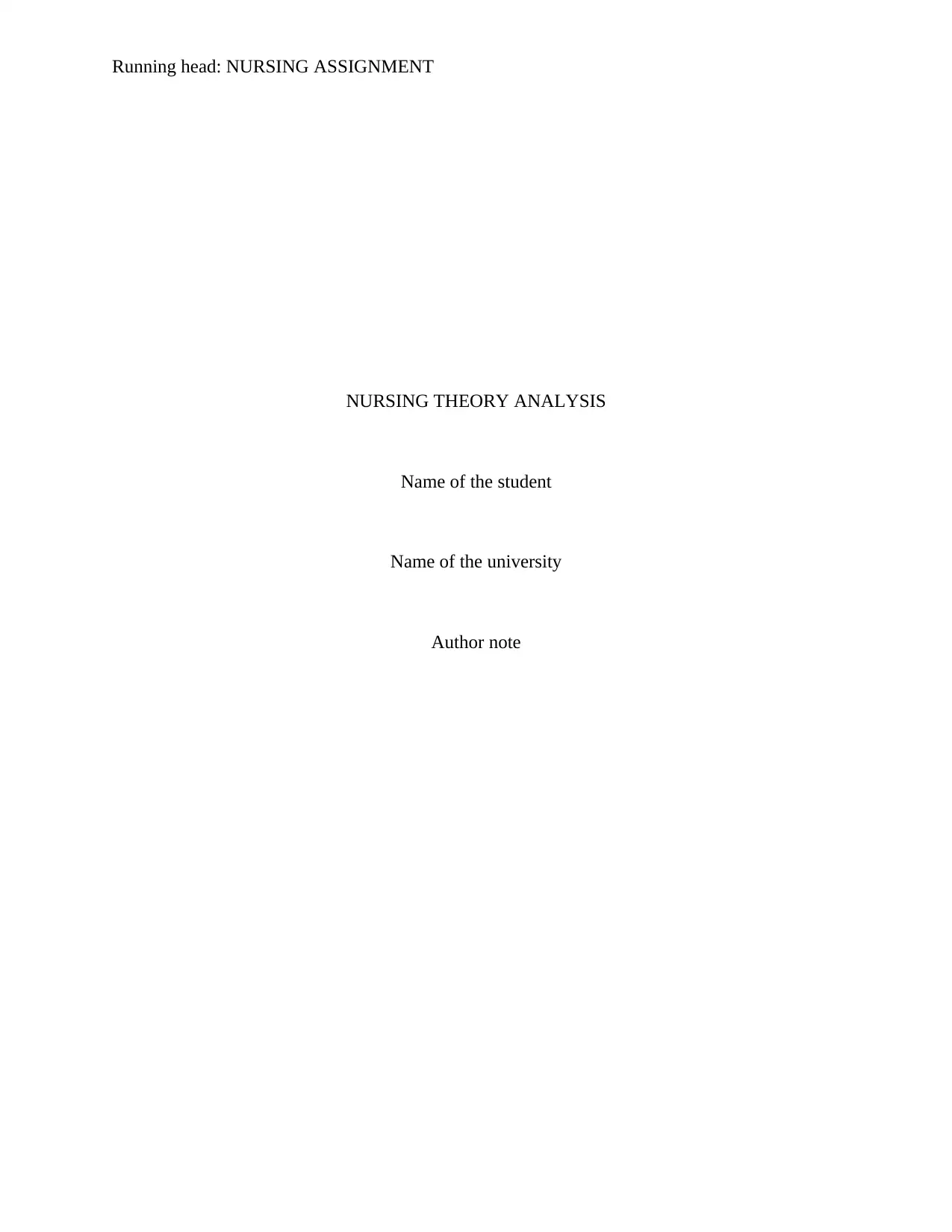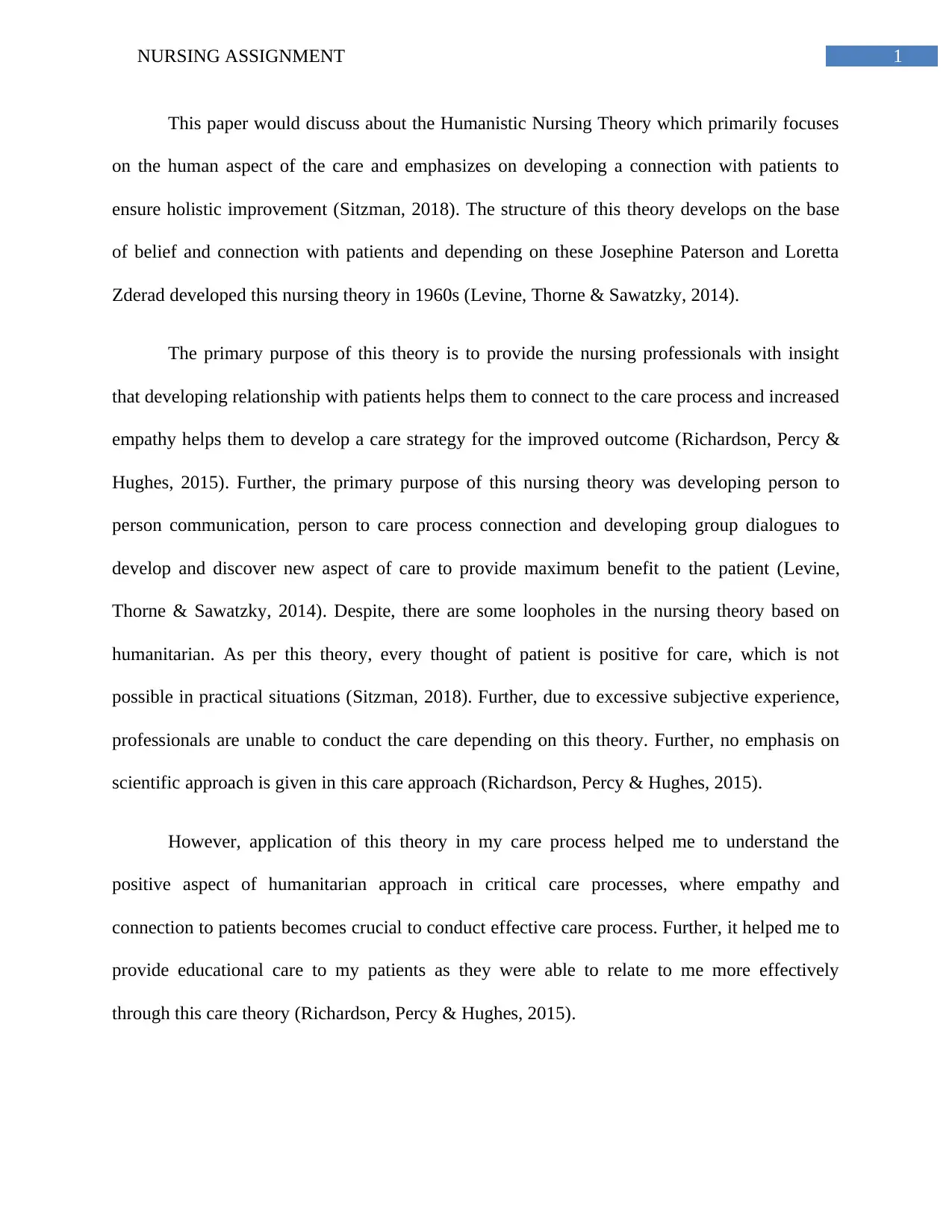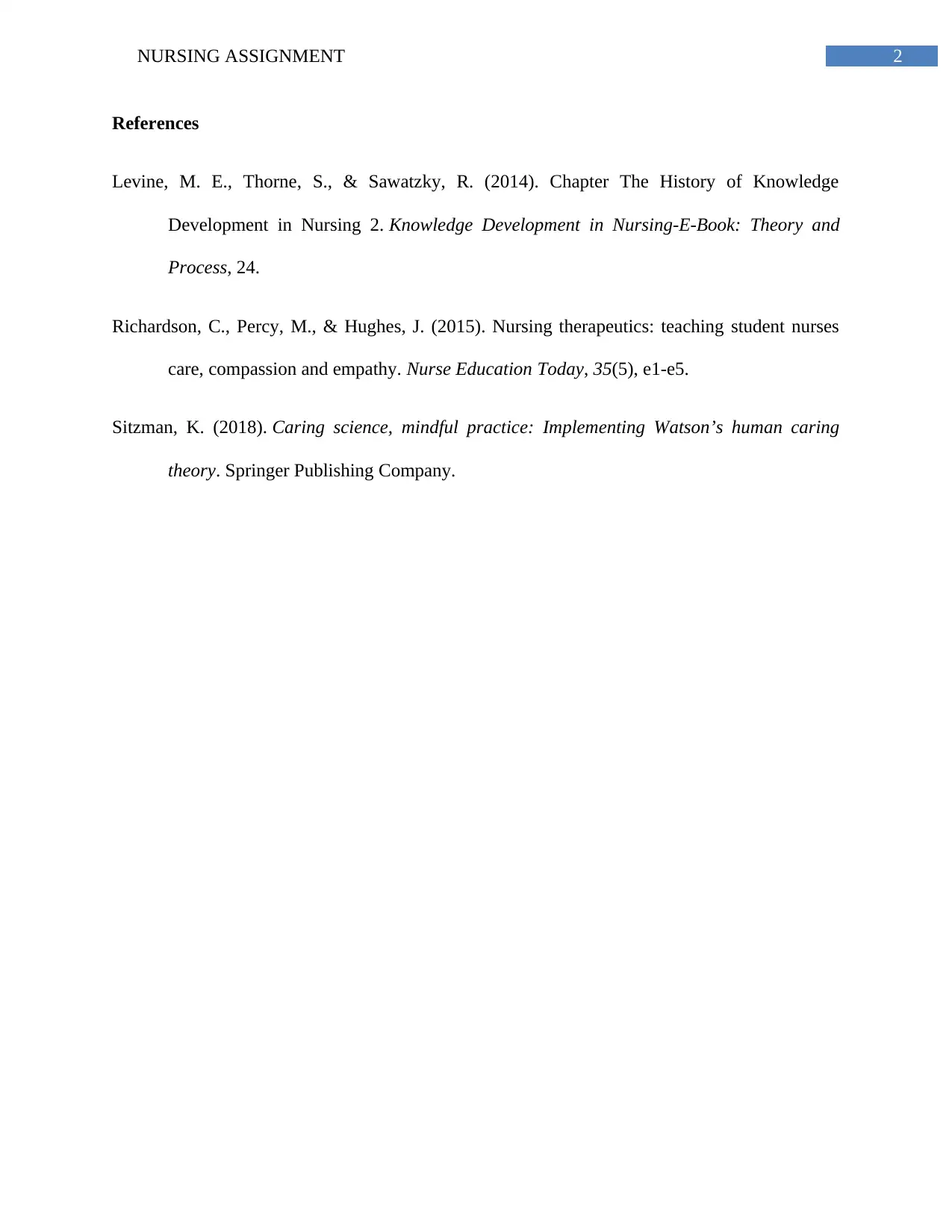Humanistic Nursing Theory: Analysis, Strengths, and Application
VerifiedAdded on 2023/04/05
|3
|377
|126
Essay
AI Summary
This essay provides an analysis of the Humanistic Nursing Theory, developed by Josephine Paterson and Loretta Zderad, which emphasizes the human aspect of care and the importance of developing a strong connection with patients for holistic improvement. The theory focuses on person-to-person communication, connection to the care process, and group dialogues to enhance patient care. While the theory posits that every patient thought is positive, which may not be realistic, and lacks emphasis on a scientific approach, its application in critical care settings can be valuable. The author's personal experience highlights how applying this theory fostered empathy, improved patient communication, and facilitated effective educational care.
1 out of 3










![[object Object]](/_next/static/media/star-bottom.7253800d.svg)